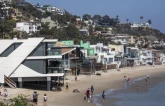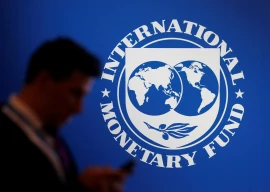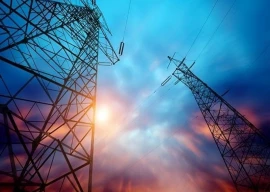1725083820-0/Untitled-design-(24)1725083820-0.jpg)
Cities that boast a Coastline are considered fortunate all across the globe, be it the Coastline of LA, or the more humble country Indonesia’s Coastline of Bali, it becomes the prime attraction of tourists and locals alike.
The tourists visit the beaches for different reasons, to bask in the sun and see what local life and the shore is like, while the locals visit it for very different reasons, Karachi is no exception in this regard and the prime focus of people since the 80s has been the Sea View Beach.
Located outside the posh locality of Defence and Clifton alike, it attracts people by the hundreds every weekend, or on any public holiday. As the population grew, so did the crowds.
Locals and tourists alike visit the Sea View Beach, which offers an array of attractions, be it fried fish, fresh from the catch or a buggy ride for the children, families love to go to the Sea View Beach.
In the 80s and the 90s, it was a popular tourist destination because it had the beach, and a playland, which offered a variety of rides to the younger crowd, including artefacts made from sea shells, collected from the shore.
PlayLand, overtime, was reduced as the volume of people increased exponentially. It still exists, but it is not a primary focus of the people visiting the shore regularly.
With time came gadgets and another dimension was introduced, that of highly superstitious people visiting the Coastline. Majority of the people had migrated to the mega city to seek better employment, but they also came with their own brand of ‘folklore’, which did not exist before.
Now, people visit the shore for different purposes, mostly, they come in large numbers to rid themselves of any ‘supernatural ailments’ be it a perceived evil eye, a hex or just plain possession, but the sense of connection to the land and sea was lost, hence a large volume of people visiting the shore, would carelessly toss plastic waste and other forms of waste right into the sea.
This consistent blatant disregard for the environment changed the landscape over time, the sea water turned murky and the once thriving marine life was badly affected, leading to a grave issue of disbalance of the eco-system in general.
Though very disturbing, this grave issue is disregarded by most as the focus has changed from admiring a sunset at the beach, or relaxing by the shoreline, to removing hexes, curses and evil eyes, which makes a person focus too much on fixing whatever the personal issues are, rather than bask in the relaxing ambience of the sea.
Nature has a way of protesting, and when nature is challenged in any way, the wrath comes in many forms, for Karachi the once lovely coastline, has turned murky.
This is because of the constant onslaught of plastic waste and the entire city’s sewerage system is dumped in the sea, which now reeks of decay, primarily because the marine life is in serious danger of going extinct.
Compared to three to four decades ago, the many varieties of fish served in the city have become extremely rare, and therefore very expensive.
Environmentalists are concerned as Pakistan is the 5th country in the world to be affected by and vulnerable to Climate Change which is a reality.
One has to just observe the erratic weather patterns to see that Climate has changed and if steps, concrete and serious steps are not taken to address this very real issue, Pakistan would suffer in the long run.
The destruction of marine life did not happen overnight, it gradually eroded as waste, solid or otherwise gathered up in the coast, and huge volume of sewerage water was continuously also dumped in the sea.
DHA Karachi took the lead in this case when the trends of littering became acute and sewerage water disposal became a concern.
It introduced five Sewerage Water Treatment Plants (STPs) in five different locations, and all of them combined have a capacity of treating 8 million gallons of water per day (MGD), of which 3 MGD (the treated grey water) is used for green spaces.
Why did DHA find it important to introduce this?
The reason is simple, the water going into the sea goes through a treatment procedure before being dumped into the sea, which ensures that the seawater remains clean from toxic waste.
This also falls in line with National Environmental Policy, which was ratified in 2005.
Farhan Anwar, Assistant Professor at Habib University and an Urban Planner explains, “the reason marine life is in danger is because the solid waste going into the sea is toxic for the marine life and the problem is compounded when sewerage water is also dumped into the sea.
The only solution is to introduce Treatment Plants, so the water dumped in the sea is not toxic.”
Nature is a beautiful harmony of balance, night and day, winter and summer, nature nurtures, but when nature is attacked, it’s the humans who have to face the consequences, which despite all the technology, we humans cannot challenge nature in any way.
The leading role that DHA Karachi took, needs to be appreciated, as they had the foresight to predict the trajectory of sewerage water’s harmful affects, which was also in line with National Environmental Policy.
It would be even better if industry leaders, and stakeholders took the matter as seriously and introduced their own STPs before the water is dumped into the sea.
Other institutions can take the cue from DHA Karachi to do the same. It is imperative that the environmental laws be implemented in letter and spirit and keeping in line with Sustainable Development Goals. After all no matter where one is, our home is where we live, and it is our duty to keep our homes clean


























COMMENTS
Comments are moderated and generally will be posted if they are on-topic and not abusive.
For more information, please see our Comments FAQ